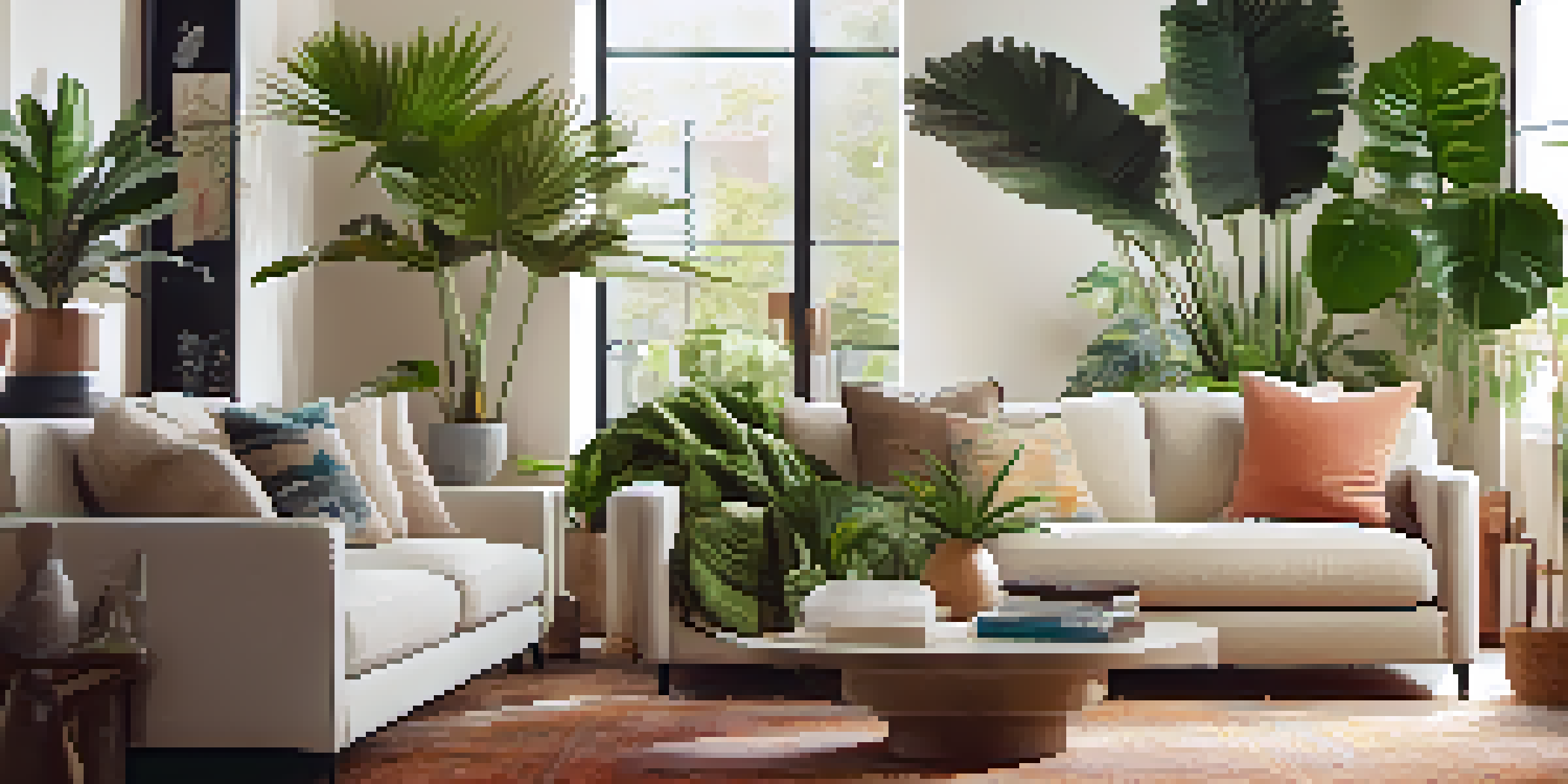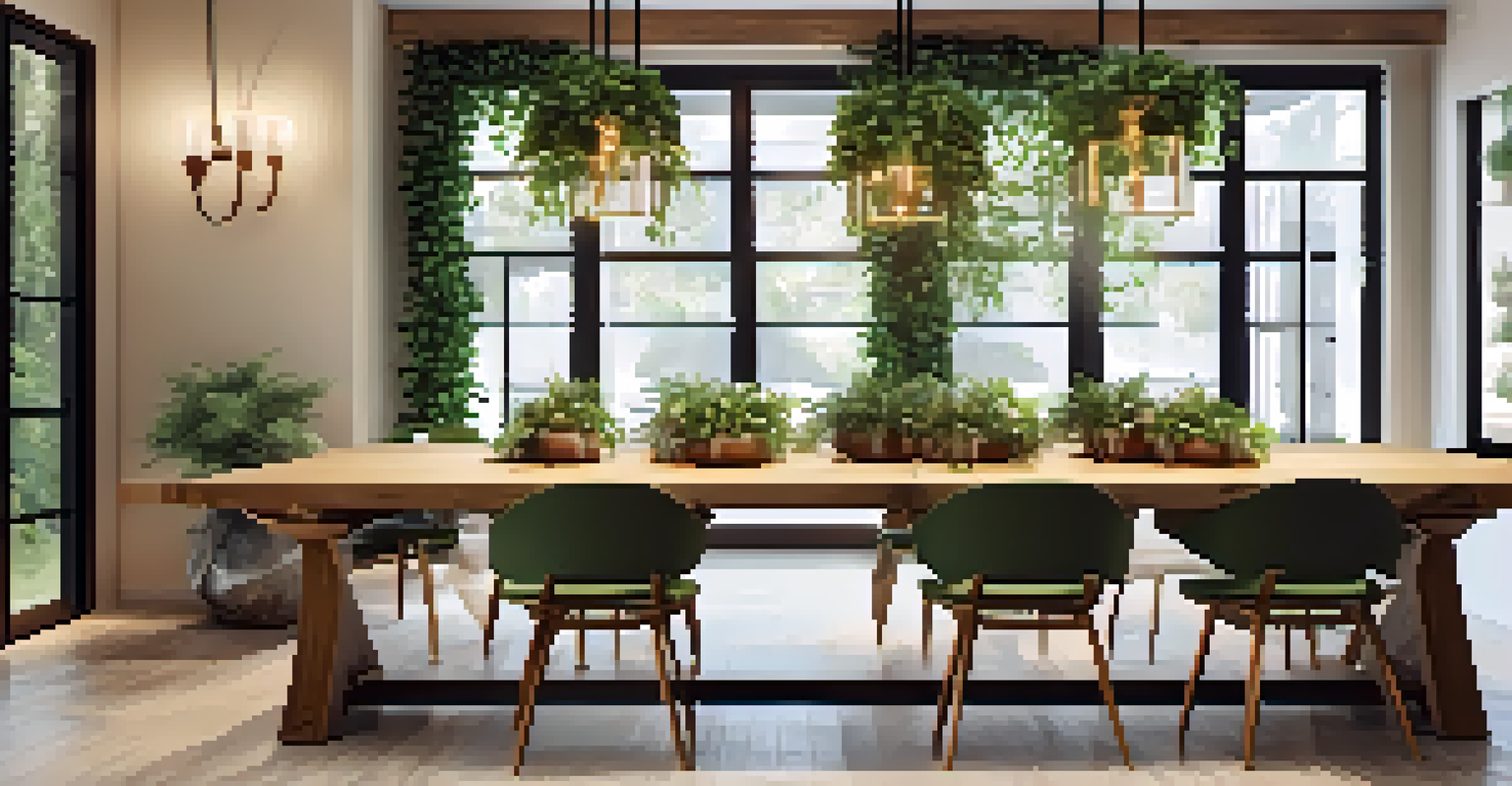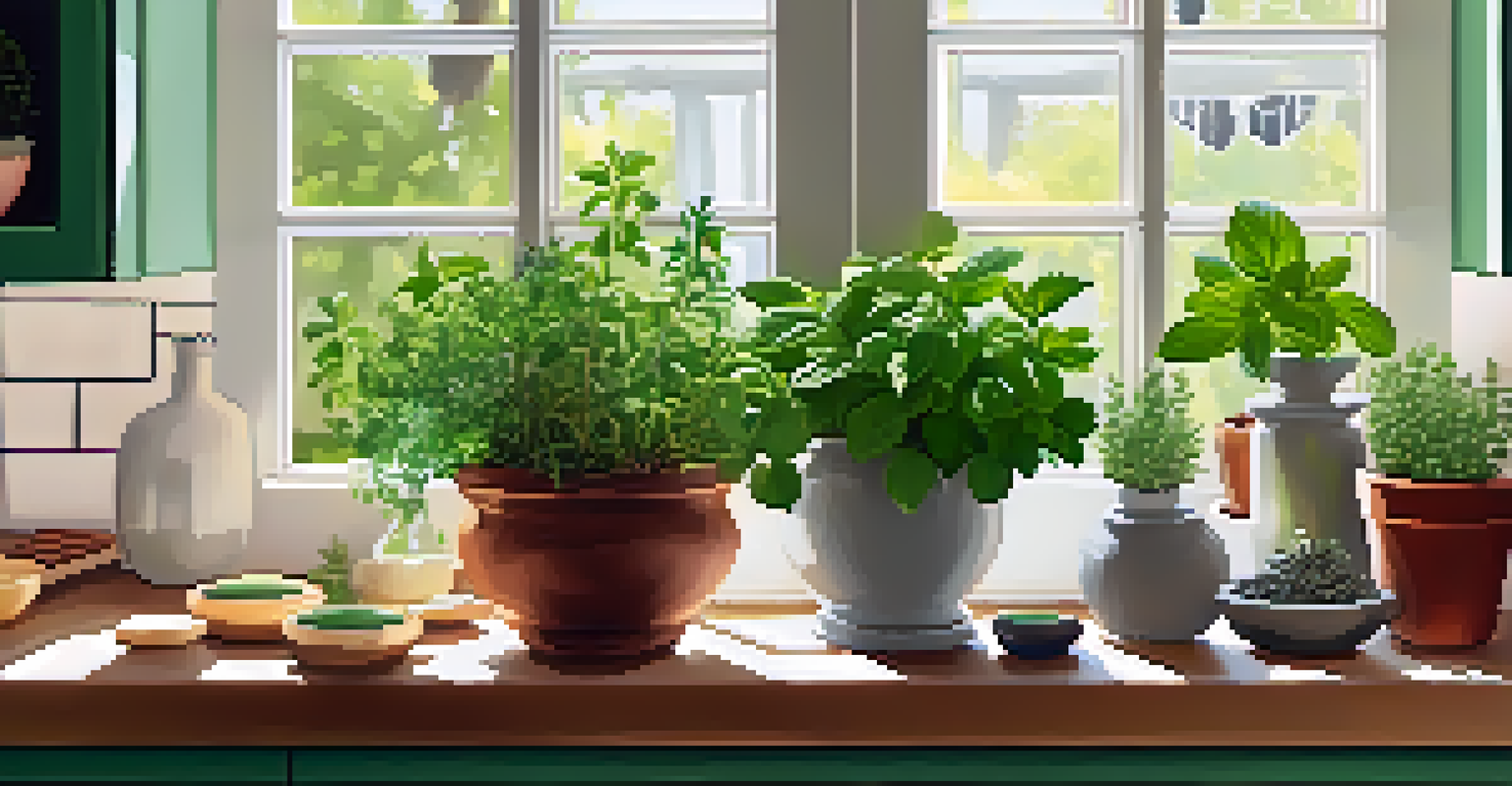Incorporating Nature: Staging with Plants for a Fresh Look

Why Incorporate Plants in Your Staging Process?
Adding plants to your staging can instantly elevate the ambiance of a space. They not only bring a fresh look but also create a warm and inviting atmosphere that can attract potential buyers. People tend to feel more at home when they see greenery, as it evokes feelings of comfort and tranquility.
The best time to plant a tree was twenty years ago. The second best time is now.
Moreover, plants can enhance the aesthetic appeal of your home by adding color and texture. Think of a simple living room: with a few strategically placed plants, it transforms from bland to vibrant. This visual appeal can make a significant difference in how buyers perceive the space.
Lastly, incorporating nature is not just good for looks; it’s also great for wellness. Studies have shown that being around plants can reduce stress and increase overall happiness. So, when you stage with plants, you're not just selling a property; you're selling a lifestyle that promotes well-being.
Choosing the Right Plants for Your Space
Selecting the right plants can make or break your staging efforts. It's essential to consider the lighting conditions of each room. For instance, succulents thrive in bright light, while snake plants are perfect for low light areas, making them versatile options for different spaces.

Additionally, think about the size and scale of the plants in relation to the furniture. A large potted palm can serve as a stunning focal point in a spacious living room, while smaller plants like pothos can beautifully accent shelves or tables without overwhelming the space.
Plants Boost Home Appeal
Incorporating plants creates a warm and inviting atmosphere that enhances the aesthetic appeal of your space.
Don’t forget about color and texture! Choose plants that complement your existing decor. For example, if your space features a lot of earthy tones, vibrant green foliage can provide a refreshing contrast that catches the eye and adds depth to your design.
Creative Ways to Display Your Plants
Displaying plants creatively can enhance their visual impact. Consider using hanging planters to draw the eye upward, adding an unexpected element to your decor. This is especially useful in rooms with high ceilings, where vertical space can be underutilized.
Plants give us oxygen for the lungs and for the soul.
Another idea is to mix different heights and sizes of plants. Layering plants by placing taller ones at the back and shorter ones in front creates a sense of depth and interest. You could also use plant stands or shelves to showcase a variety of plants at different levels.
Finally, think outside the pot. Consider using decorative baskets, unique containers, or even repurposed items like old teacups or wooden crates to house your plants. This not only adds character but also tells a story about your style and creativity.
Plant Care: Keeping Your Greens Vibrant
To ensure your staged plants look their best, proper care is crucial. This means watering them according to their specific needs, as overwatering can lead to droopy leaves while underwatering can cause them to wilt. Familiarize yourself with the care requirements of each plant before you showcase them.
Also, pay attention to light exposure. Regularly rotating your plants can help them grow evenly and prevent them from leaning toward a light source. This small effort can keep your plants looking lush and healthy throughout the staging process.
Choose Plants Wisely
Selecting the right plants based on light conditions and size can significantly impact your staging success.
Lastly, don’t forget about cleaning the leaves! Dust can accumulate on plant leaves, dulling their appearance. A quick wipe with a damp cloth not only enhances their look but also allows them to photosynthesize more effectively, ensuring they stay vibrant.
Seasonal Plant Choices for Staging
Selecting plants that reflect the current season can add a timely touch to your staging. In spring, opt for blooming options like orchids or daisies, which can bring a sense of renewal and freshness. In contrast, autumn can call for warm-hued foliage like mums or decorative pumpkins.
Additionally, seasonal plants can create a cohesive theme throughout your staging. If you're showcasing a cozy winter vibe, consider using evergreens or small potted Christmas trees to evoke warmth and comfort. This alignment with the season can resonate with potential buyers on an emotional level.
Remember, though, that while seasonal plants add charm, they also require careful attention to detail. Ensure the plants are healthy and well-cared for, as wilted or dying plants can have the opposite effect and detract from your staging efforts.
Plant Types for Different Home Styles
Different home styles can benefit from different types of plants. For example, a modern minimalist home may look stunning with sleek succulents or a single statement plant like a fiddle-leaf fig. These options can enhance the clean lines and open spaces typically found in modern designs.
On the other hand, a rustic or farmhouse-style home may shine with more textured plants like ferns or flowering plants in vintage pots. These plants can add warmth and charm, aligning perfectly with the cozy feel of a farmhouse aesthetic.
Care for Vibrant Greens
Proper plant care, including watering and cleaning, is essential to keep your greens looking their best during staging.
Don’t forget about eclectic homes! Here, you can mix and match various plants to create a vibrant, collected-over-time look. Using a variety of colors, shapes, and sizes can result in a playful yet harmonious display that reflects the character of the home.
Final Touches: Enhancing Your Staging with Nature
Once you've incorporated plants into your staging, consider adding final touches to enhance the overall look. Accessories like decorative stones, pebbles, or even candles can complement your plants beautifully. These elements can create a more polished and cohesive appearance that ties everything together.
You might also want to think about the arrangement of furniture and decor around your plants. Ensure that the plants are visible and not overshadowed by other items. A well-placed plant can serve as a natural divider or accent that enhances the flow of the space.

Lastly, don’t underestimate the power of scent. Fresh herbs like mint or rosemary can add a delightful aroma to your space, making it feel even more inviting. Consider placing a small herb pot in the kitchen to engage the senses and leave a lasting impression on potential buyers.